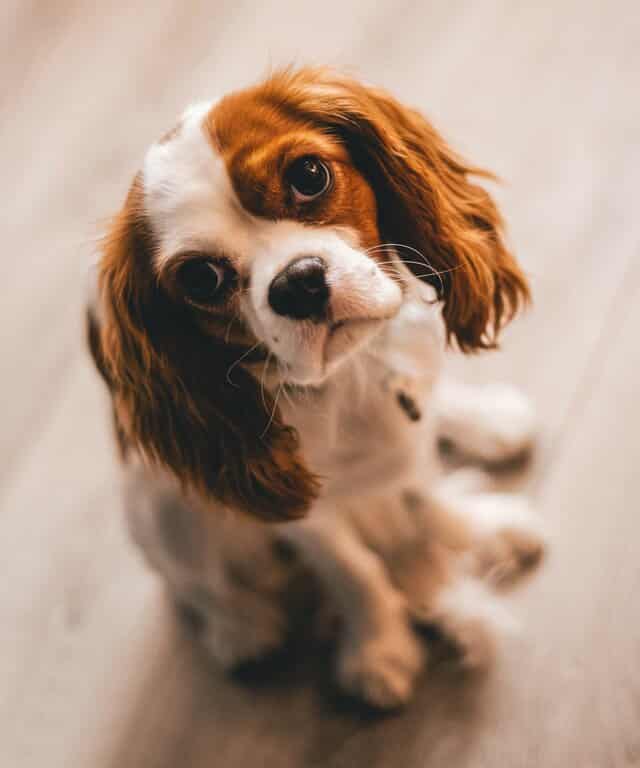
Obesity for Puppies:
A Major Health Threat Hiding in Plain Sight
The obesity epidemic is a serious problem for both people and dogs. Most dogs are overweight or obese. Pet owners need to be aware of this issue and take steps to help their dogs lose weight.
Dogs that weigh more than 15 lbs are obese. A dog that weighs less than 10 lbs is underweight.
Canine Obesity comes with significant health issues. It’s not just a cosmetic problem but will be a problem with their quality of life and might shorten their life expectancy. Dogs who are obese have a higher risk of developing serious diseases.
The Risk of Obesity for Puppies
Puppies should be fed twice daily, and given enough food to maintain healthy ideal body weight. Overweight puppies can become obese adults. Pet Owners must watch closely over rations to avoid this problem.
Causes of Obesity in Puppies
Obesity is a serious medical condition in pets. Beagles, Labs, and Shetlands are more prone to obesity because they have a fat gene. Spaying or neutering causes a 15-20% reduction in metabolism. This means that the dog will use less energy when eating and doing physical activity. If you do not adjust pet food intake and exercise after spay/neuter, the dog will likely gain weight as he gets older.
Today’s pets are overweight because mostly of dietary factors, they exercise less, are fed tasty foods, and often overeat either out of boredom or because they are given too many treats by owners. All of that love can turn into dangerous fat.
How to Tell Your Puppy Is Overweight
Weight gain can happen very slowly. Most people don’t realize that a dog is overweight until it is too late. A vet can help you figure out how to get your dog back into shape. You should use a scale to check your dog’s weight, but you shouldn’t rely on it alone. Consult a veterinary professional or use pictures provided by the manufacturer to see what your dog looks like when it is overweight.
Greyhounds have visible ribs. You can feel them when you pat your dog’s belly. Most dogs have a distinct break at the waist, starting at the back of the rib cage and ending right before the hip bones.
Dogs’ tummies should be tucked in when they sit down. Their backs should be straight, and they shouldn’t have rolls of fat on their lower backs. If you can’t tell if a dog has a roll of fat on his/her back, then he/she is overweight.
Check Your Canine Body Condition
Dogs are very smart animals. They know how to use their noses to smell out food. They can also hear sounds and understand what people say. They can even count up to five. But dogs do need to be fed regularly or else they’ll get too fat.
Check Your Dog for Fat Pads
Dogs’ bodies need to be trimmed down to reduce excess weight. Overweight dogs should be checked out by veterinarians. Their hips should be inspected during petting sessions.
Examine Your Dog’s Behavior
Obese dogs are lazy and eat too much. Free choice feeding encourages them to get fat.
Weigh Your Dog
A healthy body weight for dogs is determined by their size and breed. Sighthounds should have visible rib cage bones.
Dogs’ bodies should be examined based on their weight. A healthy dog should have an ideal weight between 4-5 pounds.
What to Do If Your Dog Needs a Diet?
You should consult your veterinarian first if you’re trying to lose weight. Your dog may be suffering from an underlying illness or disease. He needs to see a doctor for a thorough physical examination. Then, you need to discuss what diet plan could work best for him. Finally, you should take some time to read up on how to help your dog lose weight.
Dogs can’t write, but they can measure out food. A schedule helps them remember when to feed.
Dogs need to be fed twice per day. Their meals should be limited to two snacks per meal. This helps them stay healthy.
Choose low-calorie treats. Bananas, carrots, green beans, and apples are healthy snacks for dogs. Bully sticks are high in calories.
Get moving! This may be the most important thing you can do to lose weight. Your dog needs to be checked by your vet before starting any exercise regimen. Start slowly and work up as directed. There are so many things you and your dog can enjoy doing together that it’s impossible not to mention them all.
Swimming is low impact and burns calories. Walking is low impact and gets you out of the house. Fetch is fun and builds stamina. Sprinting is fast and works your heart rate up.
